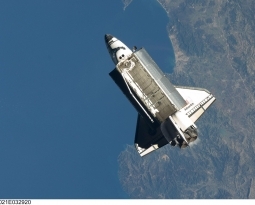New England Marine Monitoring Keeps an A-EYE on Fish
New England Marine Monitoring, a Maine company, got its start using artificial intelligence to improve data collection for groundfish fishermen and fisheries officials. As a venture of the Gulf of Maine Research Institute’s Ocean Business Accelerator, they technology to enhance scale and quality of electronic monitoring capabilities.
The technology they have been developing could eliminate the need for onboard human observers for ground fishermen and ultimately creates safer, faster, and more accurate and affordable monitoring and data collection. Without this type of technology, the groundfish fishery requires 40% of a fisherman’s trips to be monitored. With New England Marine Monitoring’s AI technology, this 40% observation can be done automatically. Fishermen would no longer need to go on dangerous fishing trips for weeks at a time.
Their AI uses multiple cameras wired to a computer and mounted to a boat rig. The cameras can then continuously monitor the fish as they are brought aboard, dumped, sorted, and specifically pay attention to any bycatch and what is thrown back overboard. Usually, this data will then be meticulously analyzed by lab staff back on land. The AI has been trained to recognize when fishing is happening and cuts out irrelevant footage. Testing of implementation of this technology has already shown a reduction in review time by 17%. It can also freeze frames of each instance of fish, highlighting the fish with a white box. The reviewer no longer needs to sit through hours of footage, and can instead jump directly to relevant still images to count and track fish and bycatch. This still image technology is expected to further reduce review time by 15%. Introducing AI into the fishing industry could rapidly increase efficiency and accuracy of data collection.
The required monitoring for ground fishermen increased from 25 percent of trips in 2018 to 40 percent in 2020, and may increase to 100 percent next year, thanks to an amendment to the current groundfish monitoring program adopted by the New England Fishery Management Council in October. The 100 percent monitoring target is intended to improve the reliability and accountability of catch reporting in the fishery to ensure there is precise and accurate representation of catch (including discards), and that species are protected from overfishing. The measure still needs to be approved by the National Oceanic and Atmospheric Administration but could greatly benefit from this AI technology.
Are you developing new software for an existing application? Did you know your development work could be eligible for the R&D Tax Credit and you can receive up to 14% back on your expenses? Even if your development isn’t successful your work may still qualify for R&D credits (i.e. you don’t need to have a patent to qualify). To find out more, please contact a Swanson Reed R&D Specialist today or check out our free online eligibility test.
Who We Are:
Swanson Reed is one of the U.S.’ largest Specialist R&D tax advisory firms. We manage all facets of the R&D tax credit program, from claim preparation and audit compliance to claim disputes.
Swanson Reed regularly hosts free webinars and provides free IRS CE and CPE credits for CPAs. For more information please visit us at www.swansonreed.com/webinars or contact your usual Swanson Reed representative.

















